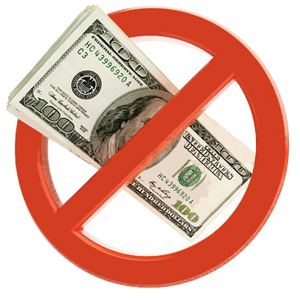Lease a Car With No Monthly Payment and Nothing Down
Well it’s true but there’s a small catch. Isn’t there always a catch?
Here’s How it Works
When you lease a car, the monthly payments are lower than if you purchased the same car with a loan — because you’re only paying for the cars depreciation in value over the life of the lease, not the entire value . That’s why leasing is so attractive to people who like to have a new car every 2-4 years.
If you wanted, and if you had the cash, you could actually pay all of those monthly payments up front in cash at the beginning of the lease (see Single Payment Car Lease) to avoid the hassle of sending payments every month to the lease finance company. It usually doesn’t save you any money (depending on how the lease company calculates it) but does offer the convenience of a one-time, single payment.
This works just fine, as long as you have the cash to make that large up-front payment.
But what if you don’t have the cash? Is there another way to take advantage of this nice little convenience?
The Trade-In Equity Trick
If you already have a vehicle that can be used as a trade-in for your new leased vehicle, and that vehicle’s loan has been paid off, or nearly paid off, you can use its trade value (equity) as total or partial payment on your new vehicle lease’s one-time payment.
Let’s say you have decided to lease a new car that has a $250 monthly payment, for 36 months. The total of your payments will be $250 multiplied by 36, which comes to $9000.
Now, let’s assume you have a car that you want to trade that has $9000 trade value (after any outstanding loans have been paid). The $9000 credit can be used to make the entire single payment on the new car’s lease and you’ll never make a monthly payment for 3 years. If your car is worth more than $9000, you’ll get money back. If it’s worth less than $9000, you would be required to pay the difference in cash, assuming you want to take this approach to your lease.
Even if you don’t have nearly enough trade-in equity for a one-time payment, you can still use it as a down payment on your new lease to reduce the monthly payment amount. See How to Trade a Car for more details.
Trade equity is a powerful benefit when leasing, much more so than when buying with a loan.
How It Works
You decide on the car you want to lease and have the dealer calculate the monthly payments. (Of course by this time, you’ve read our Lease Guide and know how leasing works and how to negotiate the best deal). Multiply the monthly payment amount by the lease term (lease months) to get the total of all your payments.
Then negotiate the best trade-in value possible for your old car (only use the value remaining after any outstanding loans have been paid). Compare this value to your previously calculated total of all lease payments.
If your trade-in value is higher, great, you can cover your entire lease, have no monthly payments, and have some cash coming back to you.
If your trade-in value is lower, you have a decision to make. You can either make up the difference with cash and avoid monthly payments altogether, or you can let the trade-in value simply be used as a down payment (cap cost reduction) on the lease, which will significantly reduce your monthly payment amount.
At the end of the lease, you have the option to purchase the vehicle for the residual value stated in your contract, or you can simply return the vehicle and walk away (some leases have a lease-end disposition fee if you return the vehicle).
Summary
When leasing a car, trading in another car can have a dramatic effect on lowering your monthly payment, or eliminating it altogether. If the value of the trade vehicle is equal to or more than the sum of lease payments on the new vehicle, you can drive your leased vehicle for no down payment and no monthly payment.

